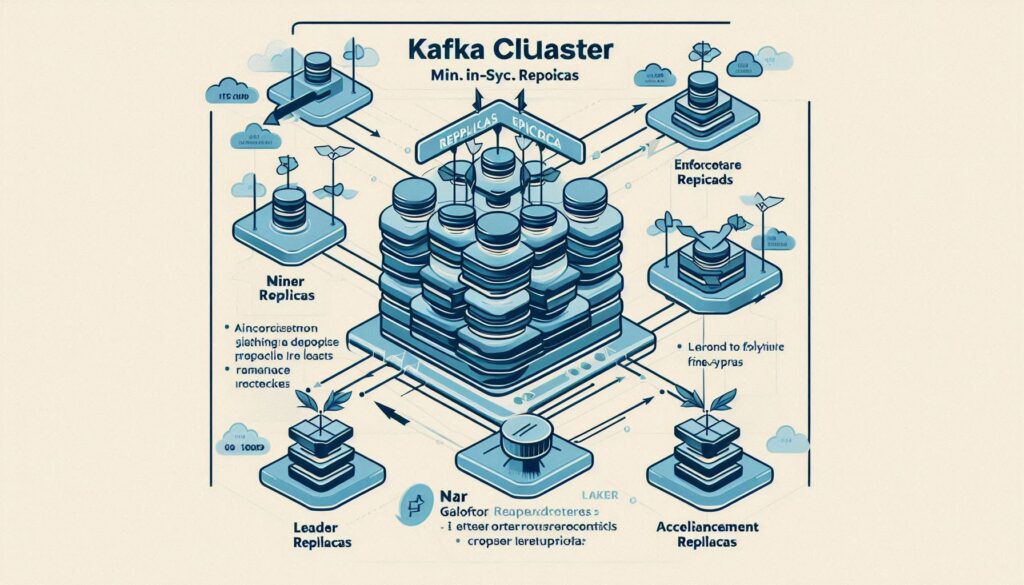Rack-aware partition assignment is a significant enhancement to Kafka’s consumer group function, improving fault tolerance and efficiency in distributed environments. This feature, introduced through KIP-881, allows consumers to prioritize partition assignment based on rack affinity, ensuring better resilience in the event of infrastructure failures.
TL;DR
KIP-881 ensures that Kafka assigns partitions to consumers in the same rack whenever possible, introducing rack-aware partition assignment. By optimizing partition placement based on physical infrastructure topology, this approach reduces cross-rack traffic and enhances fault tolerance.
How Rack-Aware Partition Assignment Works
- Rack Metadata
Each broker in Kafka can be tagged with abroker.rackidentifier, representing its physical or logical location. Similarly, consumers can be configured with aclient.rackproperty to indicate their rack location. - Partition Affinity
During partition assignment, the Kafka consumer coordinator attempts to assign partitions to consumers in the same rack. However, if a rack-local consumer is unavailable, the assignment will fall back to consumers in other racks. - Fallback Mechanism
KIP-881 ensures fault tolerance by assigning partitions to other racks when no consumers are available in the desired rack. Consequently, this fallback mechanism maintains high availability, even when rack-local consumers are temporarily unavailable.
Key Benefits of Rack-Aware Partition Assignment
- Reduced Cross-Rack Traffic
Assigning partitions to consumers within the same rack minimizes network traffic between racks, improving latency and reducing costs. - Enhanced Fault Tolerance
By localizing traffic and assignment within racks, the system becomes more resilient to rack-level failures, as Kafka can rely on rack-affinity-aware assignments. - Optimized Resource Utilization
Rack-aware assignments lead to more efficient utilization of network and compute resources, particularly in geographically distributed setups.
Configurations for Rack-Aware Partition Assignment
- Broker Configuration
Assign abroker.rackidentifier to each broker in the Kafkacluster.properties
broker.rack=<rack-id>- Consumer Configuration
Set theclient.rackproperty for each consumer to specify its rack location.properties
client.rack=<rack-id>Best Practices
- Accurate Rack Metadata
Ensure all brokers and consumers are tagged with the correctrackidentifiers to maximize the benefits of rack-aware assignment. - Monitor Traffic Patterns
Use monitoring tools to observe cross-rack traffic and ensure the configuration reduces unnecessary inter-rack communication. - Test Failover Scenarios
Simulate rack failures to validate the fallback mechanism and ensure uninterrupted service during outages.
Known Issues and Limitations
- Configuration Overhead
Adding rack metadata to all brokers and consumers requires careful planning and increases configuration complexity. - Fallback Scenarios
While the fallback mechanism ensures availability, cross-rack traffic may increase during rack failures, negating some performance benefits. - Backward Compatibility
You must update existing Kafka deployments to utilize rack-aware partition assignment, which requires careful migration planning.
Conclusion
Rack-aware partition assignment, as introduced by KIP-881, is a game-changer for distributed Kafka deployments. This feature reduces latency, enhances fault tolerance, and minimizes cross-rack traffic by optimizing partition assignments based on rack locality. Although configuring it requires careful effort, its significant benefits make it a valuable addition to modern Kafka infrastructures.
References
- KIP-881: Rack-aware Partition Assignment for Kafka Consumers
- Balancing Replicas Across Racks
- Rack-aware Partition Assignment for Kafka Producers and Consumers
- Understanding Kafka partition assignment strategies and how to write your own custom assignor
- Kafka rack awareness feature: Cloudera




